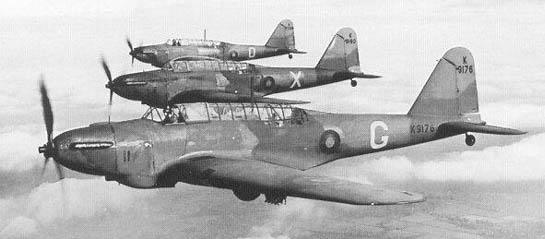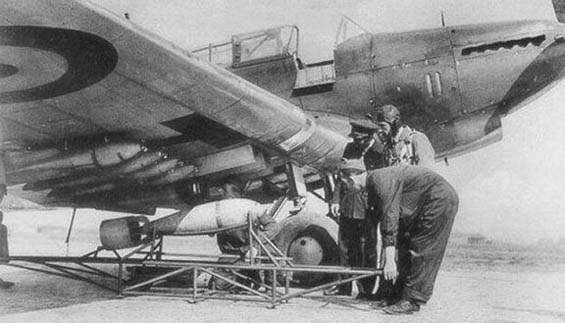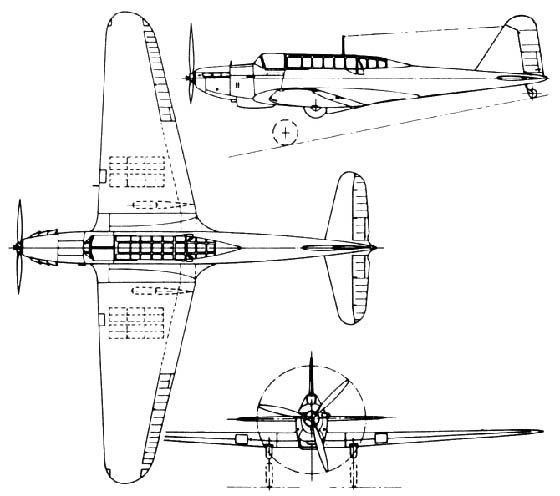BRITISH AVIATION RESOURCE CENTER > BOMBERS > PREVIOUS PAGE

Fairey Battles of 226 Squadron.
|
Type: Three-seat light bomber. Origin: Fairey Models: Mk. I to IV First Flight: Prototype: March 10, 1936 Production Mk. I: June 1937 Final Delivery: January 1941 Withdrawal from service: 1949 Number Produced: 2,419 Engine: Model: Rolls-Royce Merlin II Type: 12-Cylinder liquid cooled Vee Number: One Horsepower: 1,030 hp Dimensions: Wing span: 54 ft. (16.46m) Length: 42 ft. 1.75 in. (12.85m) Height: 15 ft. 6 in. (4.72m) Wing Surface Area: N/A |
Weights: Empty: 6,647 lb. (3015 kg) Loaded: 10,792 lb. (4895 kg) Performance: Maximum Speed: 241 mph (388 km/h) Initial Climb: 920 ft/min (280 m/min) Service Ceiling: 25,000 ft. (7620m) Range (Loaded, economy setting): 900 miles (1448 km) Armament: One fixed .303 in. Browning in right wing. One .303 in. Vickers K manually aimed from rear cockpit. Payload: Bomb load up to 1,000 lb. (454 kg.) in four cells in outer wings. |

The Battle was a decent aircraft to fly and had no inherent faults, it was just a sitting duck when faced with modern fighters, not unlike the situation face by the Ju 87 Stuka during the Battle of Britain. The Battle continue to serve in utility role until 1949.

Sources:
Gunston, Bill - The Encyclodepia of the Worlds Combat aircraft, 1976, Chartwell Books, Inc., NY
BRITISH AVIATION RESOURCE CENTER > BOMBERS > PREVIOUS PAGE
